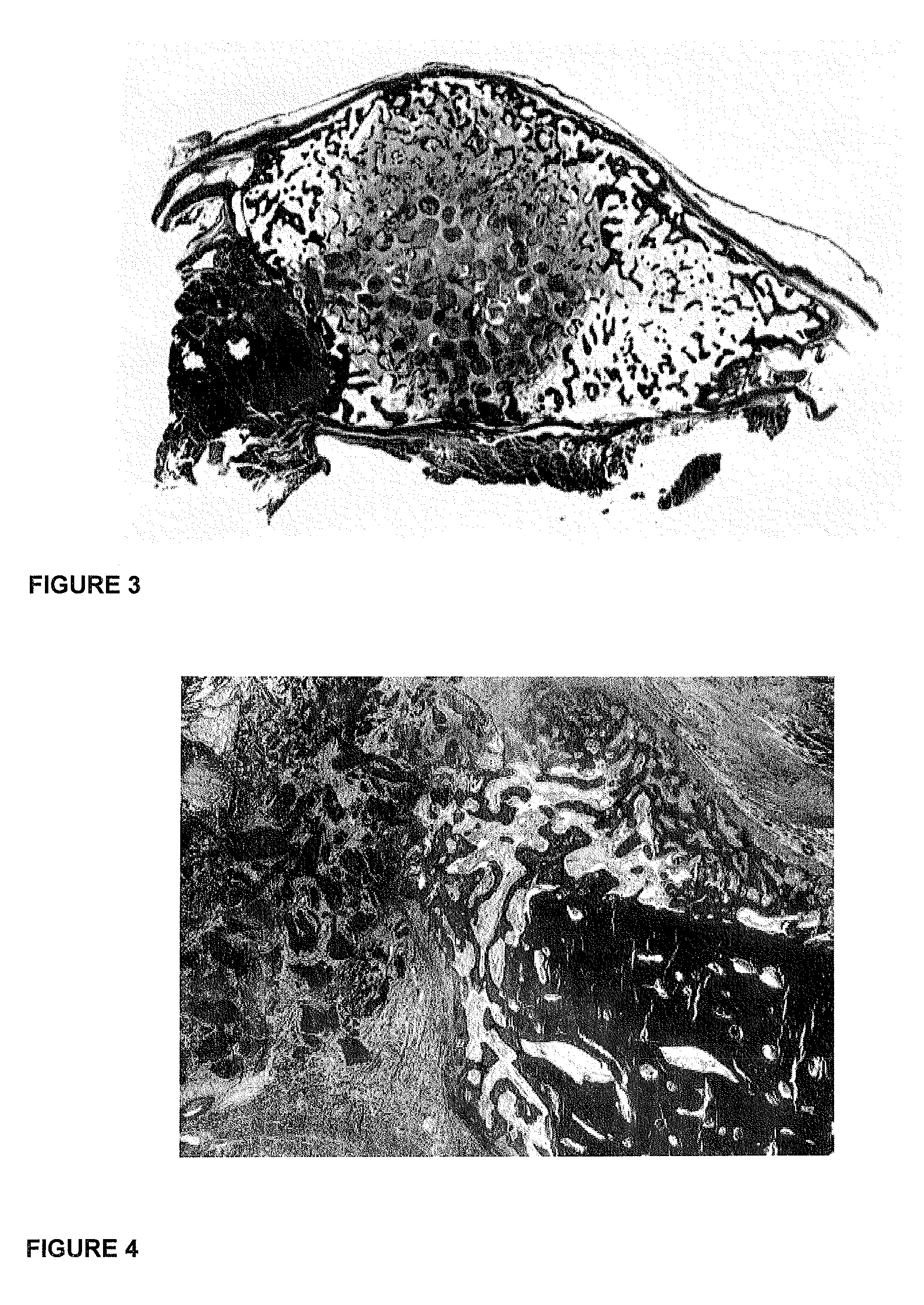Osteogenic device for inducing bone formation in clinical contexts
a technology of osteogenic devices and bone formation, applied in the field of osteogenic devices, can solve the problems of complex surgical procedures, difficult bone repair and regeneration of mandibles, and formidable challenges for skeletal reconstructionists and modern medicin
- Summary
- Abstract
- Description
- Claims
- Application Information
AI Technical Summary
Benefits of technology
Problems solved by technology
Method used
Image
Examples
Embodiment Construction
[0043]The present invention and its preferred embodiments are now described with reference to the accompanying non limiting examples and figures in which:
[0044]FIG. 1 is a clinical photomacrograph illustrating the induction of a large corticalized ossicle upon the implantation of 125 μg hTGF-β3 and delivered by insoluble collagenous bone matrix as a physiologically acceptable delivery vehicle and harvested from the rectus abdominis 30 days after implantation in an adult primate;
[0045]FIG. 2 is a photomicrograph of a histological section of the ossicle shown in FIG. 1 with large quantities of newly formed and mineralized bone in blue with large osteoid seams in orange / red upon the implantation of 125 μg hTGF-β3 and delivered by insoluble collagenous bone matrix as carrier.
[0046]FIG. 3 is a photomicrograph of a histological section of large quantities of newly formed bone upon the implantation of 125 μg hTGF-β3 and delivered by highly crystalline sintered porous hydroxyapatite as a ph...
PUM
| Property | Measurement | Unit |
|---|---|---|
| diameter | aaaaa | aaaaa |
| length | aaaaa | aaaaa |
| length | aaaaa | aaaaa |
Abstract
Description
Claims
Application Information
 Login to View More
Login to View More - R&D
- Intellectual Property
- Life Sciences
- Materials
- Tech Scout
- Unparalleled Data Quality
- Higher Quality Content
- 60% Fewer Hallucinations
Browse by: Latest US Patents, China's latest patents, Technical Efficacy Thesaurus, Application Domain, Technology Topic, Popular Technical Reports.
© 2025 PatSnap. All rights reserved.Legal|Privacy policy|Modern Slavery Act Transparency Statement|Sitemap|About US| Contact US: help@patsnap.com



